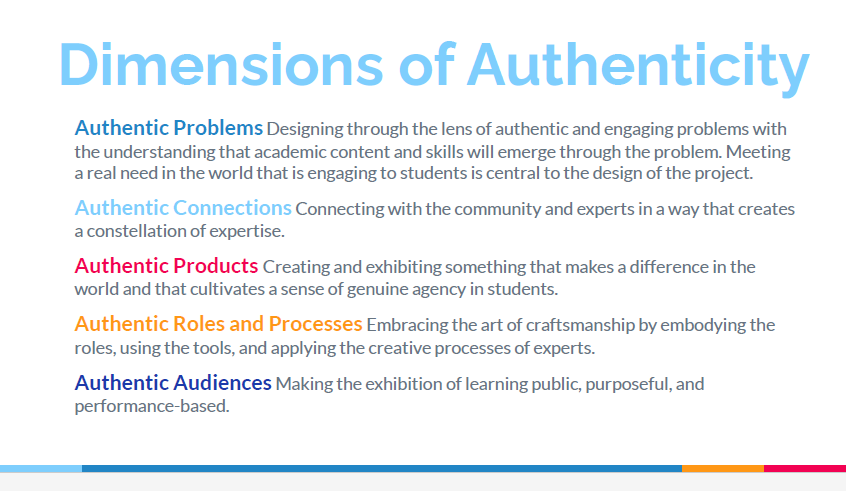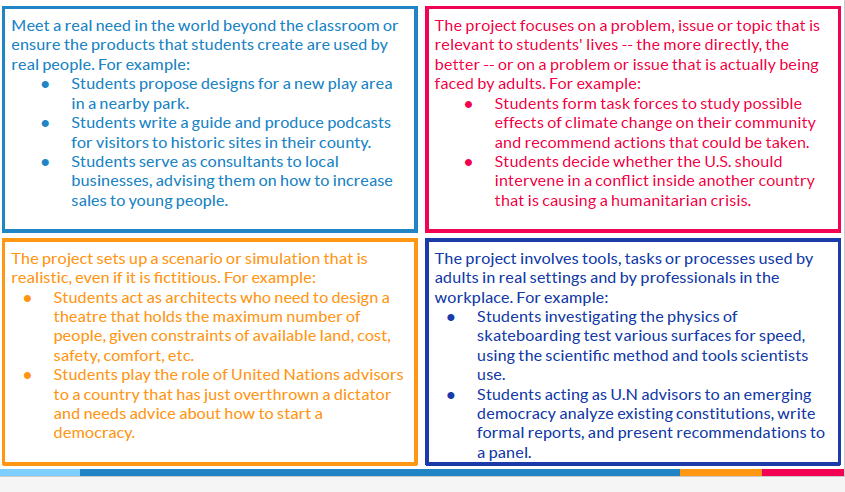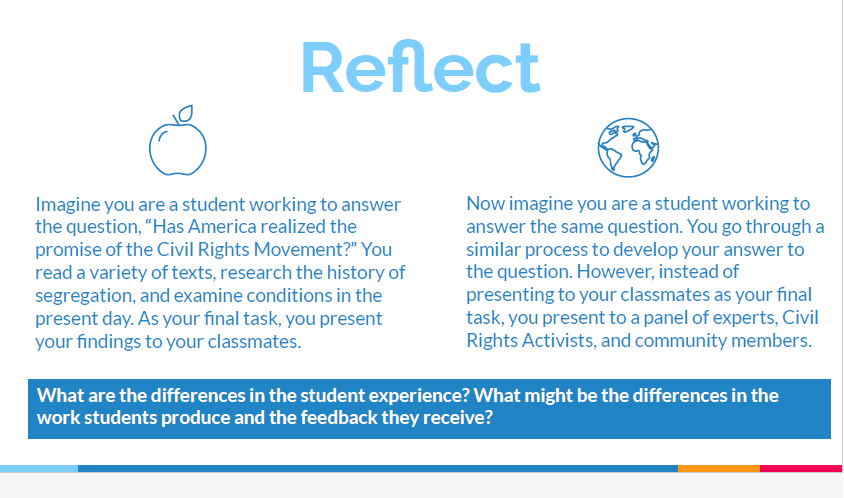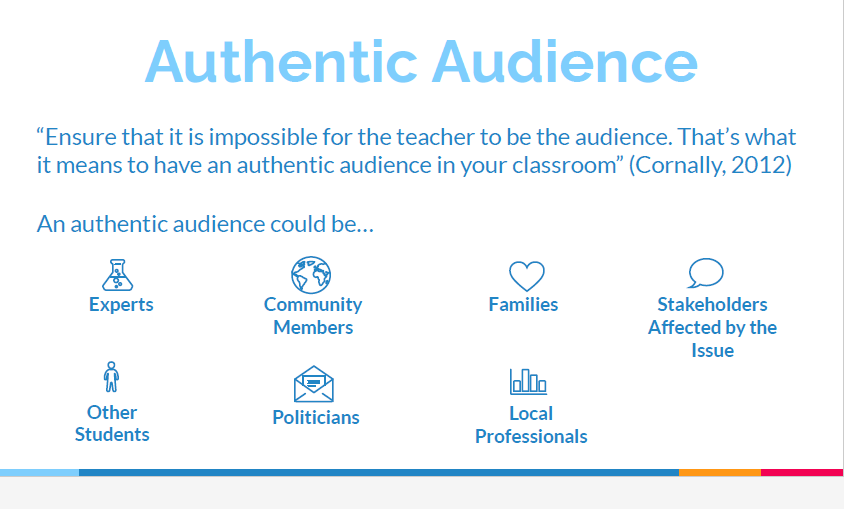Often, when educators begin designing performance assessments, authenticity is one of the key things they struggle with. It's a big move from multiple choice tests to real world application. There are some common strategies educators can use to design more authentic experiences. Take a look at the Dimensions of Authenticity below for some ideas:

We're going to explore two common techniques aligned to these dimensions: (1) Authentic Problems and (2) Authentic Audiences.
Authentic Problems
If you want an overview of methods for promoting authenticity, read PBL: What Does It Take for a Project to Be "Authentic"? from John Larmer of the Buck Institute for Education. This blog articulates four ways that project and performance task design can support authenticity and provides several examples of authentic learning tasks, which are summarized below:

If you want to develop a performance assessment around an authentic problem and are not sure where to start, you can also use the "Design Guide: Creating a Problem Frame" from reDesign.
As the Design Guide points out, there are many opportunities to connect learning to current events. How might you find fruitful intersections between the curriculum, current events, and problems that will be authentic and relevant to the students you work with?
Authentic Audience
Another way to promote authenticity is through making sure that students can share their work with an authentic audience. To understand the impact of an authentic audience, consider the following two scenarios:

One way to promote authenticity is to provide students with the opportunity to share their work with an authentic audience. To see what happened when a group of seventh graders in Maine presented on their learning to community members and Civil Rights Activists, watch Students Share Work That Matters With an Authentic Audience from Expeditionary Learning.
Students Share Work That Matters With an Authentic Audience
The graphic below shares some ideas for folks who could serve as an authentic audience, depending on the learning experience. What are your other innovative ideas for authentic audience members?

If you're new to this idea of an authentic audience and want to get some grounding in what it is and what it looks like, we recommend the following resources:
- The Value of an Authentic Audience: Edutopia blog post, which includes ideas for how to recruit an authentic audience
- The Power of Audience: Journal article providing several examples of how educators might utilize an authentic audience
- Focus on Audience for Better PBL Results: Edutopia blog post that includes a section on when to use different types of audiences